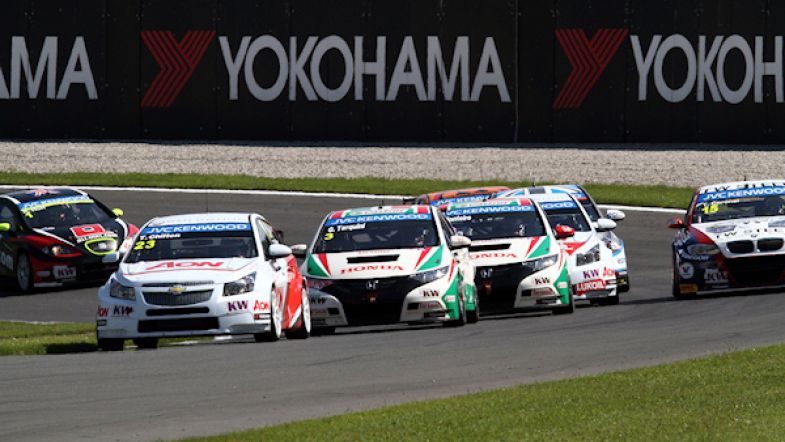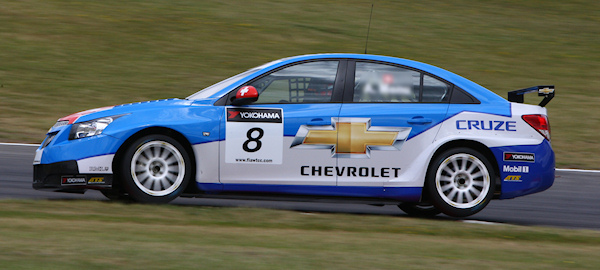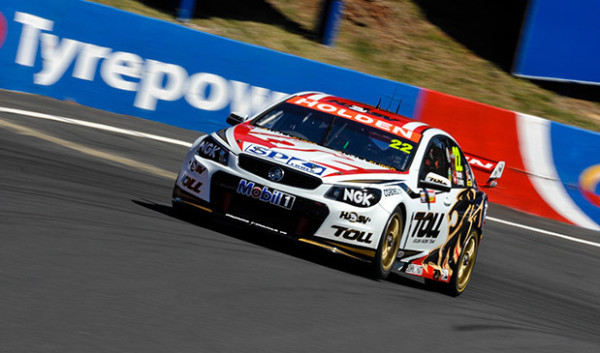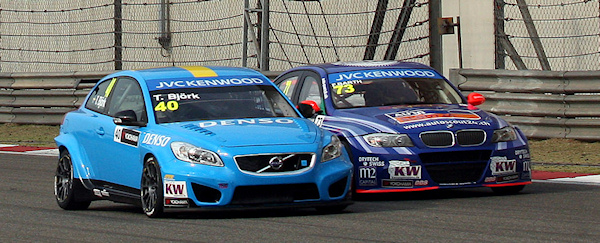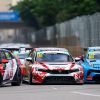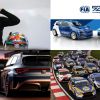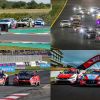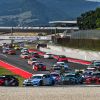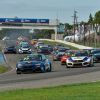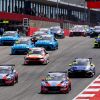WTCC Qualifying: Is it working?
Unusually for me, I hardly know where to start on the subject of WTCC qualifying, following the debacle in Shanghai. The over-riding fact is clear, however – the present system is unfit for purpose.
Let’s start at the beginning and examine how the Law of Unintended Consequences has led us up a blind alley.
When the Championship started, qualifying set the grid for Race 1, with the finishing positions of that race deciding the starting order for Race 2, with the top eight finishers starting in reverse order.
This had a number of benefits: firstly, drivers all tried as hard as they could during qualifying, going as fast as possible to try to claim a good grid spot. Secondly, even if the overall outcome of Race 1 was clearly not in doubt, there was almost always a good scrap for eighth place, which would translate as pole for Race 2. Thirdly, should a driver have had a problem during qualifying (mechanical or of his own making) there was a chance of redemption; a storming drive in Race 1 could improve his grid position for Race 2 and offer the chance of points.
All of these elements made the racing more exciting to watch, both track-side and on the TV. The qualifying format allowed drivers the chance to really wring the necks of their cars and show just what they, themselves, were capable of – exactly like all other formats of racing. Drivers were not locked-in to a bad grid position for the weekend – they had the chance to improve the hand they’d been dealt by fate. The battle for eighth also made for plenty of entertainment late-on in races, when otherwise fans may have switched off (literally, as well as metaphorically.)
However, there was a fly in the ointment. On a very few occasions (that can be numbered on the fingers of one hand, with some digits to spare…) a driver was seen to have – whisper it – slowed down in Race 1, to gain a better starting position for Race 2. This, it was decided was NOT A GOOD THING.
To prevent this nefarious behaviour continuing, changes were made to the qualifying format, so that the grid for both races would be decided on Saturday. Qualifying would now decide the starting line-up for both races.
The top ten qualifiers would start 1-10 in Race 1, then be reversed 10-1 for race 2, replicating the earlier reverse-grid set-up, in an effort to prevent total domination by one driver/manufacturer. To prevent those that knew they wouldn’t be fastest creeping around for tenth and hence Race 2 pole (or even not leaving the pits at all), the fastest twelve cars from Q1 were passed through to Q2, meaning everyone had to go out on track, to have a shot at the performance boost of a race 2 reverse-grid promotion.
Teams are no fools, however, so – replacing the less-than-once-a-season situation where a driver might give away two or three places in Race 1 for a shot at Race 2 pole – we have teams whose entire qualifying strategy is openly about finishing tenth in Q2, to claim the Race 2 pole. This is the Law of Unintended Consequences at work.
So, our qualifying system makes for even more confusing viewing than ever. The true performance of some cars is not shown, as they play the numbers game, aiming for a lap-time calculated to get them on the front row for Race 2.
I have long been an advocate of the single-car ‘shoot-out’ format to decide the top spots in qualifying. Think ‘Superpole’ in World Superbikes, or the ‘Top Ten Shootout’ at Bathurst… Such a system guarantees that qualifying will end as a climax, rather than a damp squib, with the pole-sitter waiting for the final five minutes in his car, in the pits.
So, certain in the knowledge that it will be totally ignored, here is my format for 2014 WTCC qualifying.
Q1 remains as it currently exists, with all cars on track for 20 minutes, blatting around as fast as they can. The fastest 10 go through to Q2, with 11th on down already knowing where they will start Race 1.
Q2 will be a single-car shoot-out, with the 10th fastest car in Q1 going out first and setting a time, before the 9th-fastest has a shot at pole and so on. This system ensures that qualifying builds to a climax, as each driver tries to beat those who were slower than them in Q1, whilst striving to improve their position on the grid. Last car to go is the one that holds provisional pole, trying to confirm that spot for the race.
So, Saturday’s broadcast builds the excitement and there shouldn’t be too much of a problem for the cameras in finding the car on the fastest lap. With the added visual bonus of showing the current fastest lap, versus the car on track attempting to beat it, in split-screen, viewers can clearly see where a car gains or loses time, giving them more information, as well as highlighting the differences between cars and driving styles, that may gain or lose time.
What about Race 2, Martin? I hear you ask.
I suggest returning to the old system, with the Race 2 grid reflecting the Race 1 finishing order, with the top positions reversed. I will take the hit of a driver occasionally dropping back, to allow those who struggled in Q1 to be able to improve their lot for Race 2. You shouldn’t write off people’s entire weekends based on their fortunes in one 20-minute session.
How many cars should we reverse? Eight, as before? Or perhaps more…If we reverse ten, then we might not escape the present situation – where a driver hardly needs to try in Q2 – as finishing tenth and just guarding your position in the first race, leaves you on pole for Race 2.
Perhaps, then, we should reverse the top 12 from Race 1. That would give some lesser teams the chance of a front-row grid start for Race 2, as well as making it more likely that a failure in Q1 can be over-turned by a determined teem and driver.
That helps keep more drivers in the Championship frame – helping to balance out unforeseen problems on Saturday – with the added bonus that the top two in Race 1 won’t even start in the points-paying positions for Race 2, lessening still further the chances of one marque/driver running away and hiding with the Championship lead.
Oh, and after Shanghai, one more thing. By all means invite – nay, please encourage – one-off ‘Wild Card’ entries but when you say they’re ‘invisible’ for points and positions, please ensure that this is adhered to.
Wild Card entries have several benefits. They add local interest to the grid, boost the total numbers of cars racing and act as an incentive to national championship-level teams to try their hand at the World Championship. Lift the veil, remove some of the mystique, let teams and drivers (and sponsors) see that it is possible to compete with the best in the world and you may well find some of them joining the paddock full-time. This we need.
It was great to see the Polestar Volvo team back in the WTCC for Shanghai and I am sure that they were perfectly happy to race as an ‘invisible’ entity. They were, after all, not in the Championship for points, more to re-assess the level of performance of their car and their erstwhile WTCC rivals. Knowing that they would not be allowed through to Q2 didn’t seem to be a problem – the team and rookie driver Thed Björk set about their task with admirable pace throughout.
For the other drivers in the WTCC, that shouldn’t have been a problem, either. Even had the Volvo been fastest of all in Q1, it wouldn’t have progresses to Q2. That – you might have reasonably assumed – would mean that the fastest 12 cars that were not ‘invisible’ would still progress to Q2. Apparently not. The fastest 11 Championship regulars went out.
Why?
How was the Volvo ‘invisible’ and yet still taking a place in Q2 away from a Championship entrant? How was the 12th-fastest regular entry NOT allowed the chance to battle for pole in Race 1 or Race 2? Either the Volvo was ‘invisible’ or it wasn’t. In Shanghai, apparently, it was both. Or neither.
In a World Championship, that is simply unacceptable. Clarity is vital and regular, full-time, entries must NOT have their season put in jeopardy by one-offs. Especially in the closing stages of the season, every point can prove vital and for a regular to be bumped from Q2 by an ‘invisible’ car is plainly ridiculous.
Teams openly driving for ninth and tenth, regulars being shut out by one-offs; Shanghai showed that WTCC Qualifying simply isn’t working. It’s time for a change. Let’s hope that the next revision of the format actually improves things.
And let’s hope the law-makers bear in mind The Law of Unintended Consequences.
